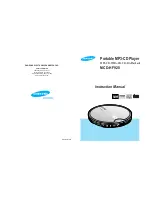
English |
19
Bosch Power Tools
1 609 929 S28 | (3.12.08)
Dust/Chip Extraction
f
Dusts from materials such as lead-containing
coatings, some wood types, minerals and
metal can be harmful to one’s health. Touch-
ing or breathing-in the dusts can cause aller-
gic reactions and/or lead to respiratory infec-
tions of the user or bystanders.
Certain dusts, such as oak or beech dust, are
considered as carcinogenic, especially in
connection with wood-treatment additives
(chromate, wood preservative). Materials
containing asbestos may only be worked by
specialists.
– Use dust extraction whenever possible.
– Provide for good ventilation of the work-
ing place.
– It is recommended to wear a P2 filter-
class respirator.
Observe the relevant regulations in your
country for the materials to be worked.
Clean the chip ejector
3
regularly. Use a suitable
tool (e.g., a piece of wood, compressed air,
etc.) to clean a clogged chip ejector.
f
Do not reach into the saw dust ejector with
your hands.
They could be injured by rotat-
ing parts.
To ensure optimum extraction of dust/chips, al-
ways work with external dust extraction or a
chip/dust bag.
External Dust Extraction (see figure C)
An extraction hose (Ø 35 mm)
16
(accessory),
can be attached on either side of the chip ejec-
tor.
Connect the vacuum hose
16
to a vacuum clean-
er (accessory). An overview for connecting to
various vacuum cleaners can be found at the
end of this manual.
The vacuum cleaner must be suitable for the ma-
terial being worked.
When vacuuming dry dust that is especially det-
rimental to health or carcinogenic, use a special
vacuum cleaner.
Integrated Dust Extraction (see figure C)
A chip/dust bag (accessory)
17
can be used for
smaller jobs. Insert the sleeve of the chip/dust
bag firmly into the chip ejector
3
. Empty the
chip/dust bag
17
at regulary intervals to main-
tain optimum dust collection.
Choice of Chip Ejector Side
With the selector lever
8
, the chip ejector
3
can
be switched to right or left. Always press the se-
lector lever
8
until it engages in the end posi-
tion. The selected ejection direction is indicated
by an arrow symbol on the selector lever
8
.
Operation
Operating Modes
Adjusting the Planing Depth
With the adjustment knob
2
, the planing depth
can be adjusted variably from 0–2.6 mm using
the planing depth scale
1
(scale graduation =
0.1 mm).
Park Rest (see figure G)
The park rest
26
allows the machine to be set
down directly after operation, without danger of
damaging the working surface or the planer
blade. While planing, the park rest
26
is tilted
upwards thus enabling full contact of the rear
part of the planer base plate
9
.
Starting Operation
f
Observe correct mains voltage! The voltage
of the power source must agree with the
voltage specified on the nameplate of the
machine. Power tools marked with 230 V
can also be operated with 220 V.
Switching On and Off
To
start
the machine,
first
push the lock-off but-
ton for the On/Off switch
4
and
then
press the
On/Off switch
5
and keep it pressed.
To switch off the machine,
release
the On/Off
switch
5
.
OBJ_BUCH-446-002.book Page 19 Wednesday, December 3, 2008 8:53 AM
















































